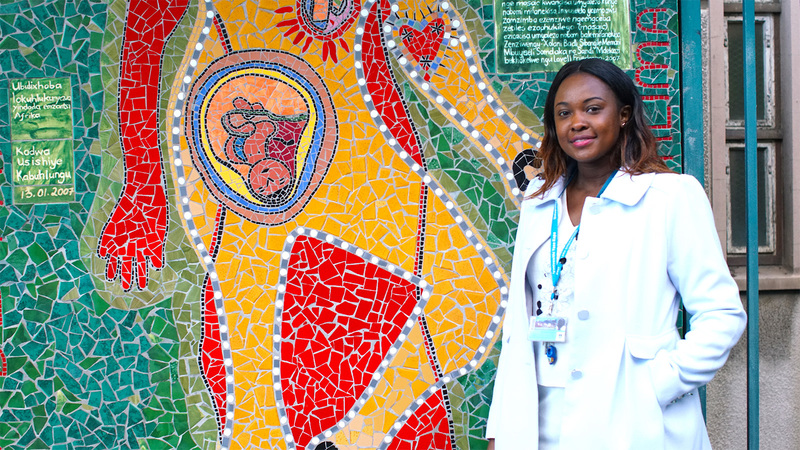5 questions with Nadia Ikumi
02 April 2019 | Story Staff writer. Photo Gavin Elder. Read time 4 min.
In 2015, Dr Nadia Ikumi (née Chanzu) – a young Kenyan scientist – became the first African to be awarded a postdoctoral fellowship by the AXA Research Fund. A researcher at the Institute of Infectious Disease and Molecular Medicine at the University of Cape Town (UCT), Ikumi aims to understand the influence of HIV infection on the immune system of pregnant women and their unborn children.
1. How would you describe your research in a nutshell?
Since I joined the UCT Division of Immunology in July 2016, I have been working on human placentas from HIV-infected and HIV-uninfected mothers in Cape Town, South Africa. I am investigating the effect of HIV and antiretroviral therapy on the immune cells in the placenta and whether this could be linked to pre-term births or deliveries of babies small for their gestational age among HIV-infected mothers.
I am investigating the effect of HIV and antiretroviral therapy on the immune cells in the placenta and whether this could be linked to pre-term births or deliveries of babies small for their gestational age among HIV-infected mothers.
2. How did you first become interested in HIV research?
I was born and raised in Nairobi, Kenya, where HIV/AIDS is a huge public health concern, so I was always aware of it. I decided to consider a path in HIV research when I came across a research group at the University of Nairobi studying female sex-workers who were resistant to HIV infection. I then got a PhD scholarship and grant to explore this avenue of research.
3. What makes South Africa – and UCT in particular – a good place for this research?
South Africa has well-established cohorts of mothers who are willing to be part of our research work. UCT in particular has excellent mentors who continue to supervise and steer me in the right direction. The infrastructure – both personnel and lab – has been the backbone of my rapid growth over the past three years. Lastly, the university’s international collaborations have enabled me to receive training from top universities, which I need for my research.
4. How could your research influence public health?
For decades, the human placenta was discarded after birth. We are now learning that it is a highly complex organ that can give us a sneak peek of life inside the womb. In the context of HIV, our work can help contribute to a better understanding of why HIV-infected mothers are at an increased risk of adverse birth outcomes.
UCT in particular has excellent mentors who continue to supervise and steer me in the right direction. The infrastructure – both personnel and lab – has been the backbone of my rapid growth over the past three years.
5. What’s the most enjoyable part of being a researcher?
It takes me about 10 hours to work on each placenta from start to finish; it can be exhausting. However, the most enjoyable part is when I get the data – once I’ve studied the cells of interest and teased out what the story is. Most recently I have started to cherish the collaborations that are established across international networks and the exchange of skills, knowledge and ideas. This is always exciting.
Bonus question: What has the AXA Research Fund fellowship meant for you and your career?
It has been fantastic! Winning the fellowship was a dream. I had never worked on a placenta before I came to UCT, but thanks to my AXA fellowship I was trained at Harvard University and I have now been able to successfully apply these skills on placenta samples here, as part of a team. AXA has been very supportive in publicising my work on several platforms. The research fellowship provides excellent financial support as well, which has been really great!
 This work is licensed under a Creative Commons Attribution-NoDerivatives 4.0 International License.
This work is licensed under a Creative Commons Attribution-NoDerivatives 4.0 International License.
Please view the republishing articles page for more information.
Research & innovation





































